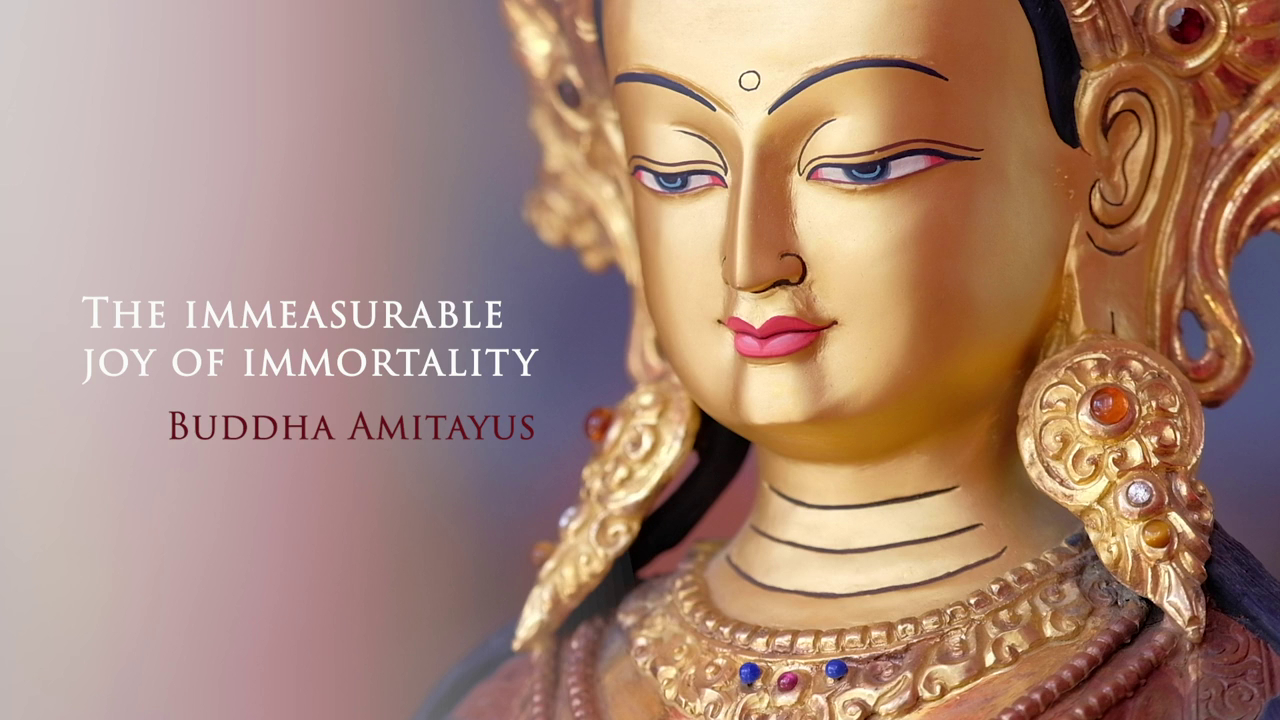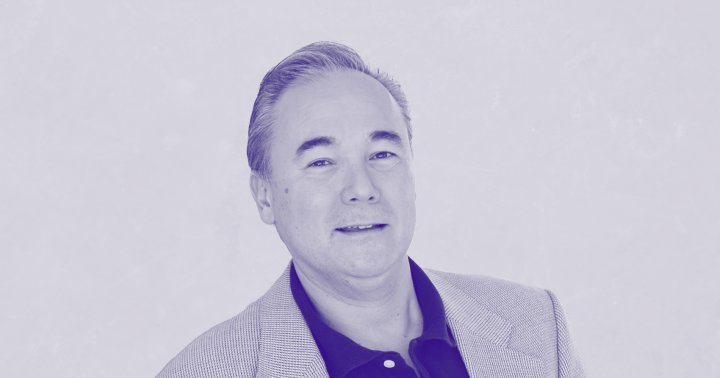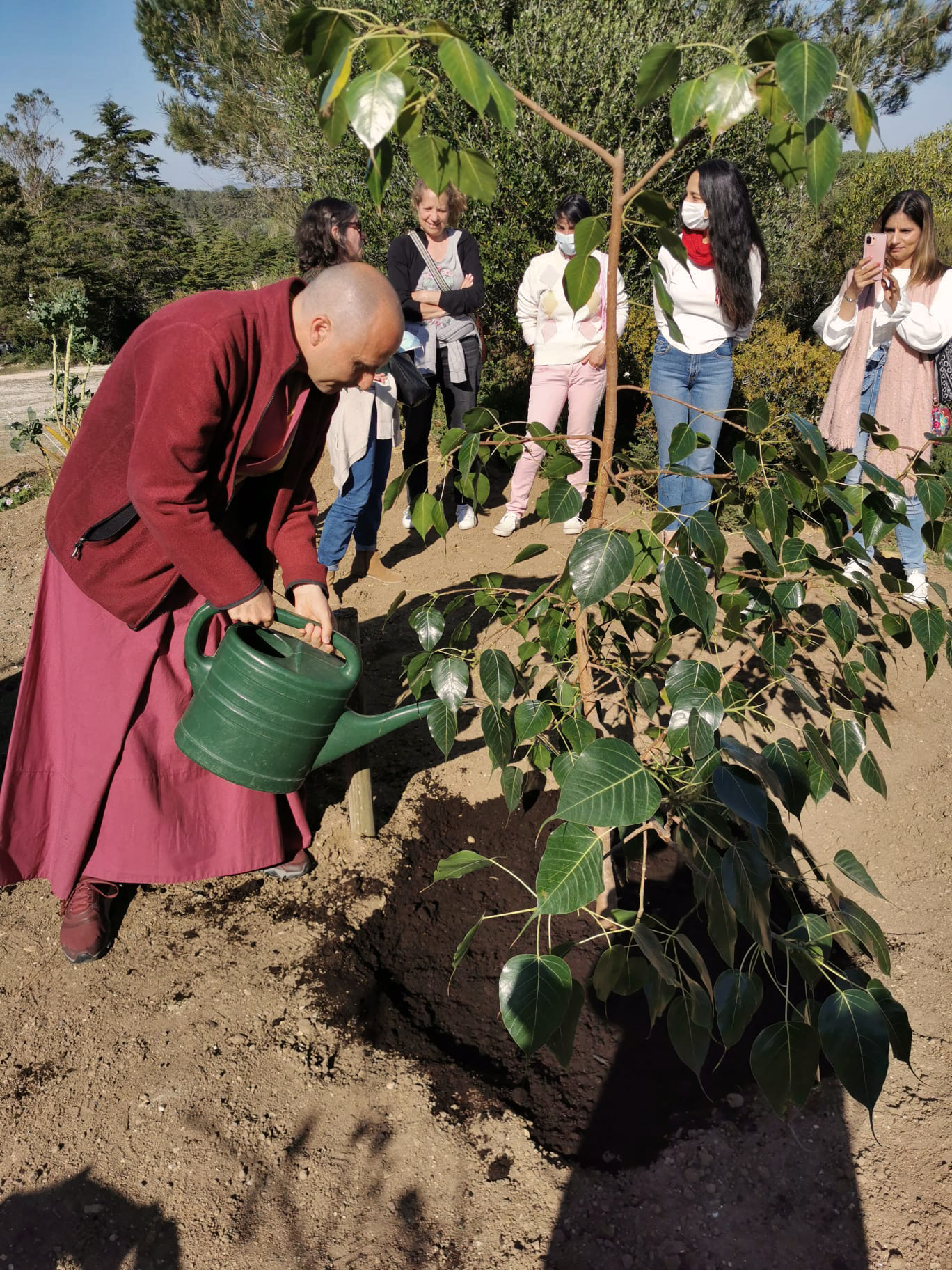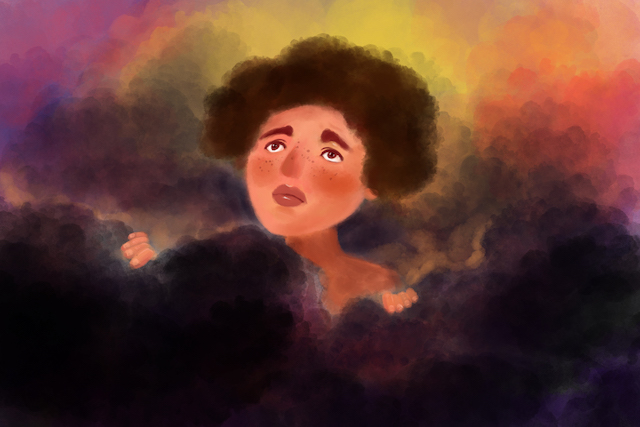The Power of Humility: Breaking Confirmation Bias for Deeper Connection, Compassion, and Learning
Research shows that intellectual humility can offer far-reaching benefits for both individuals and our society as a whole. Leaders in mindfulness and research break down the science of overcoming confirmation bias and the self-work that can open us up...

There’s an old story about a sage who lived in a lofty mountain hermitage. It was attached to a cave where he often meditated, but his followers and benefactors had also built him a lovely little building that housed all his books and provided him with a very comfortable place to sleep and a dining area with a sweeping view of many valleys below and peaks in the distance. Also attached to the building was a closet-like dwelling for his faithful attendant.
One morning the sage declared that he would like to go down to the village to exchange some of his tattered books for new ones and see what newly minted works of philosophy he could get his hands on. Reaching the village required crossing a rope bridge strung high above a gorge. As they approached the entry to the bridge, the attendant hesitated. He rarely interrupted his master, who loathed having his contemplative silence broken, but this time he felt he must speak up, knowing that his master’s eyesight had been weakened by so much reading. “Master,” he broke in, “I fear the bridge needs to be repaired. The rope looks very frayed to me.” Perturbed, and eager to get to the village, the sage responded brusquely, “How would you know? It seems perfectly fine to me.”
The attendant offered to go first to test it. Perturbed even further by this implicit questioning of his authority, the sage simply harrumphed and set foot on the bridge. No sooner had his trailing foot landed firmly on the bridge than the rope snapped. The attendant, his arms full of dozens of books, lunged for the rope, sending the books flying in the direction of his master, but he could not reach the rope in time. The sage went flying down with the loosened bridge. Too weak to hold on, he had soon let go, and the books released from the outstretched arms of the attendant rained down on the sage’s head as he plunged into the rushing waters below and drowned.[i]
The Science of Confirmation Bias
This is the ultimate parable of the know-it-all, and while we’re reading it, we likely identify more with the skeptical servant than the foolish sage. Yet, how many of us have become that know-it-all in much less mythic circumstances? One of the most common mental habits we all succumb to is confirmation bias, picking out the convenient bits of information that let us know that what we already believe is true. If we have already made up our minds that the future belongs to self-driving electric vehicles, for example, we may not find our way to stories that point out pesky complexities that call that future into question. Or if we do, we may rapidly dismiss the points with hasty counter-arguments.
In our media-saturated age, as we have all heard, we are prone to dwell in our own bubbles, our own self-confirming echo chambers, and when we share our thoughts, we may well be less likely to ask, “Could I be wrong about this?”
Asking that very question is at the heart of the growing research into the phenomenon of “intellectual humility” and the promotion of it as a tonic to heal some of the ills of a highly contentious society. In several studies, for example, people higher in intellectual humility were more likely to investigate suspect information and also more willing to engage with viewpoints that ran counter to their own. In other research, intellectual humility was found to be associated with more tolerance toward, and favorable impressions of, one’s ideological opponents, as well as a greater willingness to affiliate with them. And in terms of education and learning, another study showed that intellectually humble people are more likely to view failures as opportunities to learn rather than shortcomings. Not surprisingly, then, psychologists and thinkers of many different stripes have been starting to ask how we can foster the habit of intellectual humility in ourselves and also help to grow it in key segments of our society, such as media, politics, and academia, so that our discussions and debates move more in the direction of finding the truth than who can win the argument.
Fostering intellectual humility is a huge aim, to be sure, but one element that can contribute to it is mindfulness, with all the aspects that come with it. If we are that sage on the hill, how can we be truly and fully mindful and avoid the self-satisfied assuredness that proved his undoing?
Can Mindfulness Make Us More Humble?
Before exploring the relationship between mindfulness and intellectual humility, let’s first take a stab at defining mindfulness. If you search around, you will find a variety of definitions, which is not really a problem since many mindfulness teachers prefer not to stick to a canonical definition, believing that what is pointed to by the word “mindfulness” is an intangible feature of mind and brain, so allowing more variability in defining it makes for greater authenticity. Those who practice it and those who teach it can describe and define it based not on dogma or doctrine but rather on authentic experience.
Nevertheless, the definitions offered for “mindfulness” do tend to include certain key features. Mindfulness is first off a basic human capability to be aware of what is going on in the moment, within ourselves, around ourselves, and with others. This capability can be cultivated through practices, the most common of which is mindfulness meditation, which uses an anchor for our attention such as the breath. As our minds stray elsewhere, the anchor provides a place to return our attention and awareness to—putting us in touch with the immediacy of our body, our breath, our surroundings. We are not trying to create a state; relaxation emerges simply as a byproduct of letting our attention rest for a while without need of further elaboration.
Mindfulness in its larger dimensions goes far beyond simply focussing one’s attention and decreasing distraction. It can inspire humbleness in a very powerful way.
In order to appreciate how mindfulness practice could relate to intellectual humility and perhaps enhance it, it will be worthwhile to look at a few features of mindfulness practice that are emphasized by mindfulness teachers:
Non-judgment Curiosity Interdependence Compassion Meta-AwarenessHopefully, exploring these will indicate how mindfulness in its larger dimensions goes far beyond simply focussing one’s attention and decreasing distraction. It can inspire humbleness in a very powerful way.
Practicing Non-judgment
A common meditation instruction suggests that when thoughts arise that take you away from your attention on the breath and the body, notice the thoughts with non-judgmental attention and rest your attention back on the breath. This is often mistaken as an instruction to never apply any judgments of good or ill, right or wrong, helpful or unhelpful, in one’s life—clearly an absurd proposition. How could one live?
So what is this “non-judgment” all about?
It is quite simply humility. Some might use the term “meekness,” which has biblical associations, as one of the beatitudes: “Blessed are the meek, for they shall inherit the earth.” Or “humbleness,” which is a favorite among some Buddhists, who speak of “humbleness” as the “dwelling place of the ancestors,” those who have passed on wisdom through the ages. In Zen, it is commonly referred to as “not knowing,” as in the saying “not knowing is the most intimate,” which is to say that by suspending our certainty that we know precisely what we are encountering—a person, a situation, a possible future—we allow ourselves to perceive it with a more open mind and a greater perceptiveness. So, overall, non-judgment in mindfulness instruction refers to allowing a little bit of space between our first encounter of something in our mind and our assessment of what we’re perceiving.
Non-judgment in mindfulness instruction refers to allowing a little bit of space between our first encounter of something in our mind and our assessment of what we’re perceiving.
Non-judgment in the context of meditation is momentary, so it might also be considered a suspension of judgment. At some point, we may have to ascertain, for example, whether some harm may come about from a particular course of action, so we have to make a judgment call, but no judgment calls are required while we’re meditating, since we’re basically sitting there, doing nothing, with no special purpose or project in mind. It gives us the rare opportunity to allow something to unfold in our mind without the requirement to pounce on it and pigeonhole it as good, bad, or ugly. We set aside a particular stretch of time to meditate, and during that time we are off the clock.
The true value of non-judgment or suspension of judgment in the meditation practice emerges when we are back to regular life, where there is purpose and there are projects and therefore a need to make decisions based on our judgments. However, having spent time during meditation inserting a little bit of space between the emergence of a perception and our judgment of it, the habit can start to spill over. Our urge to pounce is lessened, because we have begun to learn that it’s possible to let things unfold a bit before deciding, and even to allow some uncertainty to settle in. Reality is a little less solid, more friable, as a result, and our meditation practice has coaxed us into being more relaxed about that.
The Power of Curiosity and Interconnection
Life is complex and hard to pin down. Still, it’s easy to be swayed by the promise of a final answer to a question or an unquestioned assessment of a situation. When we closely examine anything, though—which mindfulness practice encourages us to do—we see that everything is made up of multiple interdependent and changing elements. Nothing exists on its own, free from its associations and connections with causes and conditions. So, does recognizing this stop us dead in our tracks? What do we do when we need to answer questions and assess situations, since we can’t simply “allow” everything forever?
For one thing, we recognize that how we respond to complexity matters more than coming up with a pat answer, and that we can choose to respond skillfully. We could double down on our quest for certainty—leading to closed-mindedness and blinkered thinking. Or we could surf the waves of complexity, interdependence, and change with a light touch and a sense of humor. The driving force behind this second more skillful approach is the powerful trifecta of curiosity, interdependence, and intellectual humility.
Curiosity equips us to adapt to a rapidly changing world by fueling intellectual growth and flexibility.
Curiosity equips us to adapt to a rapidly changing world by fueling intellectual growth and flexibility. When we ask questions and listen to the answers with an open mind, curiosity expands our horizons. It drives us to seek diverse perspectives, consider alternative ideas, and challenge established norms. Intellectual humility, in turn, enhances and drives curiosity by fostering an open-minded and flexible attitude toward new information and experiences. When we are curious and intellectually humble, we’re more likely to engage in respectful and constructive dialogue. Then, we’re better able to recognize gaps in our knowledge, challenge our assumptions, and see the deeply human, often unrecognized, unconscious biases within us all. An upside of this approach is that it tends to be more fun than the alternative.
Embodying a real-world understanding of interdependence looks a lot like embodying curiosity. When we grok the mind-boggling truth of interdependence—that no single person can know all the causes and conditions that lead up to any moment—the only reasonable way to approach complex problems is with humility. Understanding interdependence demands that we recognize the contributions and expertise of others in collaborative projects and systems. It also challenges us to remember that what we say and do (or don’t do) has a ripple effect. An intellectually humble, compassionate, and curious response to recognizing the impact of our actions and decisions on others is a willingness to listen, learn, and then, in response to new information and insights, to adapt.
Bringing the Practice Into Daily Life
What do these ideas look like in daily life? Imagine you strike up a conversation with a stranger—maybe he’s in the seat next to you on an airplane, or she’s standing next to you in a long line at the DMV. You exchange names, tell each other a bit about yourselves, and then, to keep the conversation going, you mention that you read an article in the newspaper that morning about UFOs (once called unidentified flying objects, now called UAPs or unidentified aerial or anomalous phenomena). You tell your companion that there were 510 sightings last year, of which 171 remain unexplained. Assuming your companion has not read the article, there are a couple of ways they might respond: “That’s crazy, people who think UFOs are real are nuts,” or “Tell me more.” The subtext of a closed declarative statement like “That’s crazy, they’re nuts” is that your companion has made up their mind on the subject. Unless you both enjoy a lively argument, a closed statement is a conversation-stopper, while an open-ended response like “Tell me more” has the opposite effect. By signaling a willingness to suspend judgment and listen, asking someone to “Tell me more” points to the profound relationship between intellectual humility, interdependence, and curiosity. This mighty triad feeds intellectual growth and expands perspectives in the very best of ways.
Sometimes, the most impactful embodiment of curiosity, interdependence, and humility is to exercise restraint—to hold back from saying or doing anything.
If we value curiosity, interdependence, and intellectual humility, it makes sense to consider our speech and actions in light of them to see how we’re doing. It’s easy to forget, though, that choosing not to respond—to be silent—can also be a wise response. Sometimes, the most impactful embodiment of curiosity, interdependence, and humility is to exercise restraint—to hold back from saying or doing anything. We embody curiosity (and non-judgment) when we pause to listen, observe, and understand before we speak or act. We embody interdependence (and compassion) when we zip our lips to avoid hurting someone’s feelings because we recognize that what we do and say affects others. And, we embody intellectual humility (and meta-awareness) when we acknowledge that, since we can’t possibly have all the information about anything, our opinion about something or someone might be wrong.
And how do we do that? Through mindfulness—mindfulness of our thoughts, feelings and beliefs; mindfulness of other people and their thoughts, feelings, and beliefs; and, mindfulness of our surroundings.
Acting With Intention
Madeline L’Engle, author of A Wrinkle in Time, once wrote, “I am still every age that I have been. Because I was once a child, I am always a child. Because I was once a searching adolescent, given to moods and ecstasies, these are still part of me, and always will be…” To one degree or another, who we are is the product of both our own personal history and our collective human evolutionary history, but under the heavy cloak of these histories is our inherent newness in the world, unburdened by history, wide-eyed and curious, naive and receptive—intellectually humble.
“I am still every age that I have been. Because I was once a child, I am always a child. Because I was once a searching adolescent, given to moods and ecstasies, these are still part of me, and always will be…”
Madeline L’EngleWhen we eat a juicy peach, we may immerse ourselves in the sensory wonder of sweet taste, yielding texture, sun-ripened warmth, and intoxicating smell. But we may also find ourselves remembering other peaches from our past, our aunt’s famous peach pie, or the time we were stung by a bee while enjoying a peach sitting under the tree we just picked it from. Our human comparing mind may wish to assess whether this peach is as good as that other peach, or whether this peach measures up to what we consider to be the ideal peach. What may arise from these memories, comparisons, and expectations could be joy, grief, disappointment, or any one of a multitude of emotional responses stemming not from the peach itself, but from our incredible (and sometimes incredibly limiting) human capacities for imagination, memory, analysis, and projection.
None of this is much of a problem in the relatively benign example of eating a peach, but consider the complexity of human experience that might have included an abusive childhood that threatened to rupture the child’s essential lifeline of love (in the form of food, clothing, and shelter). These conditions tap into the biologically programmed need for connection as the primary means of survival and sets down neurological pathways that leaves the adult always on alert for potential separation from the herd or tribe that is emotionally equivalent to danger and death. Or consider the person growing up in a culture of oppression, marginalization, or discrimination against their closely held identities, such as race, gender, or sexuality. These circumstances also tap into hardwired instincts for survival, belonging, and safety that make it nearly impossible for a person to connect to the fresh perception and intellectual humility that are at the core of our human nature.
History and experience are also a tremendous gift, of course, in that we humans learn and grow and develop and achieve things in the world that would be impossible without this background. But conversely, our past can lead us to tremendous pain, suffering and stress in our daily lives. This evolutionary and personal inheritance is, according to psychologist Paul Gilbert, “not our fault, but it is our responsibility.” The suggestion Gilbert makes is that, while we can’t shed experience or evolution, we can lighten its burden, shift our course toward our core values, and recover more of our true nature as inherently aware, curious, and compassionate beings who thrive in our inner and outer environments.
While we can’t shed experience or evolution, we can lighten its burden, shift our course toward our core values, and recover more of our true nature as inherently aware, curious, and compassionate beings who thrive in our inner and outer environments.
The practice of mindfulness and compassion is indeed one way many people have taken responsibility for this predicament in their lives—whether they framed it in this way or not. Suffering—whether identified as stress, depression, anxiety, or physical illness—has been the springboard for millions to seek out programs like Mindfulness-Based Stress Reduction (MBSR), MIndfulness-Based Cognitive Therapy (MBCT) or Mindful Self-Compassion (MSC) as a means of relief.
These training programs build upon a foundational attitude of “Beginner’s Mind” or “don’t know mind” whereby the participant is encouraged to encounter life (whether it is a simple raisin, their own body, a social interaction, or a challenging emotion) with curiosity, patience, warmth, and willingness. This simple (although not easy) practice begins to foster an untangling of direct perception from the judgment, thinking, association, and conditioning—all of which works against intellectual humility.
These phenomena are the accumulated baggage of any human life, some are helpful (when they lead to decreased pain and suffering) and many are not (when they foster resistance, harsh self-criticism or shame). The aim of these programs is to empower individuals to see these threads that make up the cloth of their lives and begin to untangle them. The resultant “meta-awareness”—to know thinking as thinking—helps participants learn to detect when their human brains go on autopilot in situations where a more deliberate, mindful, and intellectually humble mode is more helpful. They learn to disengage from the habitual and reside more fully in the intentional.
Come Home to Kindness
In the MBCT program (originally developed as a means of relapse prevention in depression), the target is largely the conditioned way of thinking that leads a person down a path of depression. In those who have experienced depression in the past, these paths are often well-worn and familiar to the patient, but they feel unavoidable and inevitable until the light of mindfulness is shined upon them. Participants in MBCT begin to develop experientially, through mindfulness practice, the realization that “thoughts are not facts” and that they are, in fact, not their thoughts. This “decentering” from mental activity is the core healing process that allows the participant to return to the clear seeing and intellectual humility of Beginner’s Mind and to view depressogenic thought patterns as simply conditioned nerve impulses or “brain secretions” that may or may not have any basis in fact or present reality. “Don’t believe everything you think” brings a smile to our lips because of how often we discover that we’ve been fooled by our crafty human brains. The comedian Emo Phillips nailed it when he said, “I used to think that the human brain was the most fascinating part of the body. Then I realized, whoa, ‘look what’s telling me that’.” Like the Wizard of Oz, our brains can appear quite fearsome and powerful, but pulling back the curtain with mindfulness exposes it for something much less so.
The clearer seeing fostered by mindfulness practice often leads people to realize just how painful and hurtful their own inner dialogue can be. For many, the constant companion of an inner critical voice (often the internalized voice of a harsh or perfectionistic childhood caregiver) is a persistent painful reminder of the precariousness of the potential for disconnection from others and, as noted previously, the existential threat that disconnection poses.
Tapping into our natural human capacity for compassion (often much more easily harnessed for our dear friends than for ourselves), practicing self-compassion can begin to loosen the bonds and relieve the pain of self-criticism and shame, promoting resilience and thriving, largely through fostering and strengthening the innate human resource of compassion. This “coming home to kindness” is another means of restoring intellectual humility by reducing inner dialogue and habitual ways of being to simply untested hypotheses, rather than established (and unquestioned) facts.
There is a world of difference between “I am stupid” and “I am having the thought I am stupid.” The former feels immutable, the latter creates space between us and the thoughts our brain serves up. A oft-cited quote—frequently misattributed to holocaust survivor Viktor Frankl, although the source is unknown—captures this beautifully: “Between the stimulus and response, there is a space. And in that space lies our freedom and power to choose our responses. In our response lies our growth and our freedom.”
Learning to respond rather than react to situations, thoughts, emotions, or other people is the essence of mindfulness practice and a powerful means of tapping into our capacity for intellectual humility by lightening the load of the accumulated baggage of a lifetime and our shared human history as well.
Creating the Conditions for Intellectual Humility
As we have explored here, there is a common sense case to be made for the practice of mindfulness and compassion to foster intellectual humility. However, this is only valuable to us and society at large if that common sense is actually deployed. As Voltaire said, “Common sense is not so common.”
In order to be willing to venture out of our bubble, to embrace our interconnectedness and bravely encounter experiences and emotions that we routinely avoid (like uncertainty, fear, or shame), it is a necessity that we feel some degree of psychological or emotional safety to do so.
As long as our defenses are up or our nervous systems are aroused, we will opt for the relative safety of our familiar and long-held but deeply flawed beliefs about other people and the world in general. From that vantage point in our bubble, we may see intellectually how stuck we are and how an intellectually humble approach would be better, but thinking will not make it so.
As someone once said, “People change, not when they see the light but when they feel the heat.” A willingness to feel that heat requires that we feel certain that we will not be burned. From a mindfulness perspective, we can create our own sense of inner safety by going slow, being willing to be a “slow learner”, and patiently watching our conditioned urges to react arise and fall away. By bobbing on the waves of reactivity and remaining present and aware, we slowly see things as they actually are (usually less threatening or dangerous than our thoughts tell us they are) and this allows our nervous systems to settle, our sense of survival and safety to emerge and our deeper wisdom can arise.
In the end, like most things worth doing, this process takes time and patience to overcome years or generations of habitual reacting, but the potential for a more harmonious, promising and joyful society is worth it.

 AbJimroe
AbJimroe 






















![Are You Still Optimizing for Rankings? AI Search May Not Care. [Webinar] via @sejournal, @hethr_campbell](https://www.searchenginejournal.com/wp-content/uploads/2025/06/1-1-307.png)






